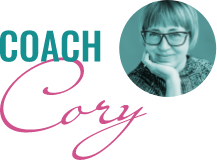You've made it through a long diagnosis journey. Now you need to decide with your healthcare team what treatment is best for you. Understanding each option can help with this decision. The sooner you start treatment, the better chance you have to improve your quality of life.
Treatment Goal: Bring cortisol back to normal
When treating Cushing's disease, surgery is the recommended first choice of treatment to bring cortisol levels back to normal. This is a specific surgery to remove the pituitary gland tumor. However, if you are unable to have surgery or choose not to, there are medications to help lower cortisol levels.
If you have already had surgery but your symptoms are returning, or if your symptoms never improved in the first place, read about treatment options for recurring or persistent Cushing's disease.


Pituitary surgery: what you need to know
I wasn't afraid of surgery. I had hope that everything was going to be okay.
The first thing your doctor may suggest to treat your Cushing's disease is a pituitary surgery. This is called transsphenoidal surgery (TSS). It allows surgeons to remove the tumor on the pituitary gland. This is a very specialized brain surgery, so it is best performed by an experienced neurosurgeon who has done many of these specific procedures.
The pituitary gland is so small, how do doctors get to it?
Your surgeon will make an incision deep inside your nose, toward the brain. Seems strange, doesn't it? But this is how surgeons access the hollow space, known as the sphenoid sinus, below the pituitary gland. Special tools, such as an endoscope (a long tube with a light and tiny camera on the end), are used to help remove the tumor.
Even if the surgery was successful, you may not feel well right away. You may have to take cortisol replacement therapy until the cortisol pathway recovers. Symptoms may take time to improve.
Brain surgery sounds scary. It's OK to be scared. Finding out more about it can help ease anxiety. Talk to your doctor about what to expect before, during, and after surgery. Don't be afraid to ask questions. You've got this.
It may take 2 to 12 months for you to begin to feel relief from your symptoms
However, every patient is different. Talk to your doctor if symptoms still bother you after surgery.
Overall Health
- Muscle strength may take some time to improve
- High blood pressure and diabetes may improve, but not be fully cured
- Osteoporosis improves within 6 months
Appearance
- Weight loss in stomach area may happen quickly
- Weight loss in other areas may take longer
- Moon face should quickly improve
- Skin and bruising may improve within weeks
Cognitive
- Memory, attention and general “mind fog” may get better but may not improve completely
Sometimes the recovery from pituitary surgery is not what you expected. If your symptoms are still bothering you, talk to your doctor. It does take time to get back to “you,” but if it seems like something is not right, don't be afraid to advocate for yourself. Say something!
Medical management: Its effects on cortisol
Knowing there were options to treat Cushing's disease was uplifting. I had confidence in the team and a lot of optimism and positivity.
Pituitary surgery, or TSS, is the recommended first choice in treating Cushing's disease. But in some cases, you may not be able to have surgery. It's possible that medications may be able to help lower your cortisol levels. The decision about the best treatment for you should be made with your doctor.
Sometimes surgery may not have been successful, and your symptoms don't improve. Or maybe your symptoms returned after a period of time following surgery. Medications may be able to help lower cortisol in these instances as well.
Medications target cortisol levels differently
There is no medicine that cures Cushing's disease. But there are several medications that lower cortisol in three different ways.

Cortisol pathway
Target: Pituitary tumor
Goal: Lower ACTH levels
Target: Cortisol receptors
Goal: Block cortisol action throughout the body
Target: Adrenal Glands
Goal: Stop the adrenal glands from making cortisol
Target: Pituitary tumor
One class of medications directly targets the pituitary tumor in the brain. This helps to lower levels of adrenocorticotropic hormone, or ACTH levels. Lower ACTH results in lower cortisol levels and may help many of your symptoms.
Learn More
Target: Adrenal Glands(cortisol production)
Cortisol is made in the adrenal glands located on top of the kidneys. These medications target the adrenal glands to stop them from making too much cortisol. By directly lowering cortisol levels, this can reduce the symptoms that are caused by too much cortisol.
Learn More
Target: Cortisol receptors
There is another class of medicines that doesn't actually reduce ACTH or cortisol levels. These medications bind to cortisol receptors found throughout the body. The cortisol that is made in the adrenal glands is then not able to attach to these receptors. This will reduce the symptoms caused by too much cortisol.
What's the best option? Well, there isn't a medication to cure Cushing's disease. But there are medications that may bring cortisol levels back to normal. This can help reduce your symptoms and improve your quality of life. Talk to your healthcare team about the best treatment option for you.
What happens if symptoms return?
Have you had pituitary surgery (TSS), or have you tried medications, but your symptoms have returned? Or maybe they never really got better after surgery?



 Taking the next step: recurring or persistent cushing's
Taking the next step: recurring or persistent cushing's